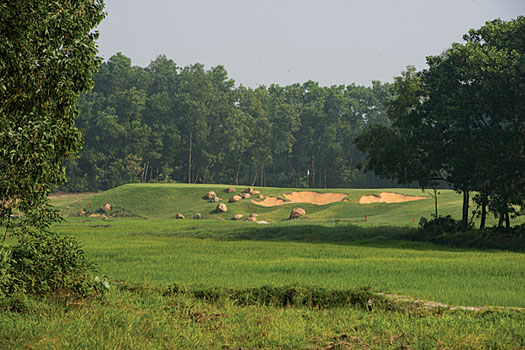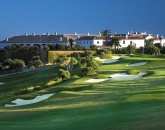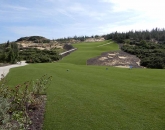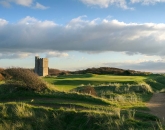
Before I spoke I was fortunate to walk each of the holes and watch as some of golf’s future stars tackled the famous links.
It is interesting that many of the holes at Hoylake traverse relatively flat terrain with only a few holes nestled in high dune scape. Whilst the terrain is hardly comparable to Royal St Georges or Royal Birkdale it is no less of a challenge - in fact the holes on the flattish parcels of land are remarkably interesting and many characterful and unique. The golf course has an identity thanks in parts to its uniqueness. In fact had two of golf’s most quirky holes - the one shot "Dowie" and the two shot "Royal" - remained intact I am convinced that the club would be more identifiable and revered today. The changes to these holes were in part due to the fact that both green complexes were sat so hard up against the out of bound fence that a golfer could putt his or her ball off the course. By today’s standards this is deemed as unfair or even ridiculous.
Out of bounds is a common theme at Hoylake. As early as the first hole golfers have to contend with the dreaded OB - this one an internal out of bounds - that tightly hugs the right side of the hole as it doglegs sharply right tempting golfers to take it on. No easy start but it certainly grabs your attention.
Out bounds on the first hole - and no less on the right side - would be seen as taboo today. It is this very thinking that partly saw the demise of both the 'Dowie" and "Royal" as architects look to stay the straight and narrow and golfers jump for the sky when having to contend with anything out of the ordinary. The result being that most of our golf courses today carry a similar look and feel about them - very few are identifiable and characterful and most are stereotyped. I am with ‘Golden Age’ architect Tom Simpson in defining the merits of a stereotypical golf course: "A dull, stereotyped course is not satisfying to anyone, least of all to the designer himself, because it gives the player nothing to discover; it is read like a book and fails to interest him."
I certainly don’t advocate building a castle or church on your golf course to add memorability and character - that would simply be ‘Mickey Mouse’ - but I am of the opinion that if something different, charming or perhaps unique exists on the property then why not use it to good effect. Lest not forget that so much of golf is about discoveries and memories and how much of this is determined by what you encounter during the game. It’s hard to forget the ‘graveyard’ on the right side of the first tee at Ballybunion or the ruins on the seventh hole at Pennard. What about the rock walls of North Berwick or the rail line flanking some of the golf course at Prestwick?
At Laguna Lang Co, a course I designed alongside Sir Nick Faldo in central Vietnam, we were presented with the opportunity to incorporate rice paddy fields within the layout - after all, they did exist on the property to begin with. Many would deem having five hectares of paddy fields nestled within the golf as a fluky hazard but Sir Nick and I felt it would add a uniqueness, character and identity. Golfers get to experience something different and not one of them will forget the experience.
Similarly at the Open this year, golfers will get to experience something a bit out of the ordinary - for no one likes ordinary. Some of the quirkiness that still remains at Hoylake will test the best and few, if any, will forget it. I leave you with Tom Simpson one more time: "Roads, railways, sheds and gardens may be thought unsatisfactory and unwelcome, yet they are often the essence of a course; take them away and the difference would at once be felt".
Pages
Click here to see the published article.











